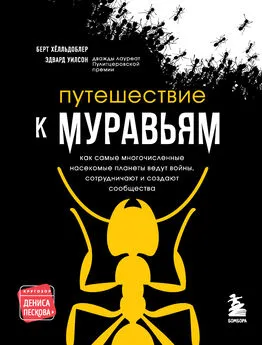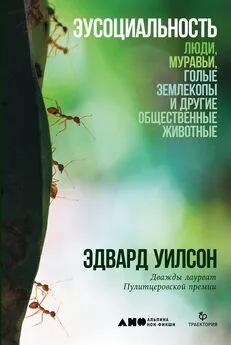Эдвард Уилсон - Эусоциальность [Люди, муравьи, голые землекопы и другие общественные животные] [litres]
- Название:Эусоциальность [Люди, муравьи, голые землекопы и другие общественные животные] [litres]
- Автор:
- Жанр:
- Издательство:Литагент Альпина
- Год:2020
- Город:Москва
- ISBN:978-5-0013-9192-0
- Рейтинг:
- Избранное:Добавить в избранное
-
Отзывы:
-
Ваша оценка:
Эдвард Уилсон - Эусоциальность [Люди, муравьи, голые землекопы и другие общественные животные] [litres] краткое содержание
Именно эти немногочисленные виды, как считает Уилсон, демонстрируют предысторию человеческих социальных моделей.
«Эусоциальность» – новаторская работа в области эволюционной теории, написанная доступным языком и наполненная интересными наблюдениями, которая заставляет читателя многое переосмыслить.
Уилсон сосредотачивает внимание не на устройстве нашего мозга, а на истинном, по его мнению, источнике нашего превосходства над другими видами – способности к совместному труду.
Эусоциальность [Люди, муравьи, голые землекопы и другие общественные животные] [litres] - читать онлайн бесплатно ознакомительный отрывок
Интервал:
Закладка:
Tschinkel, W. R. 2006. The Fire Ants (Cambridge, MA: Belknap Press of Harvard University Press).
Wang, J., Y. Wurm, M. Nipitwattanaphon, O. Riba-Grognuz, Y.-C. Huang, D. Shoemaker, and L. Keller. 2013. A Y-like social chromosome causes alternative colony organization in fire ants. Nature 493 (7434): 664–668.
Wilson, D. S., and E. O. Wilson. 2007. Rethinking the theoretical foundation of sociobiology. Quarterly Review of Biology 82 (4): 327–348.
Wilson, E. O. 1971. The Insect Societies (Cambridge, MA: Harvard University Press).
Wilson, E. O. 2008. One giant leap: How insects achieved altruism and colonial life. BioScience 58 (1): 17–24.
Wilson, E. O. 2012. The Social Conquest of Earth (New York: Liveright).
Wilson, M. L., et al. 2014. Lethal aggression in Pan is better explained by adaptive strategies than human impacts. Nature 513 (7518): 414–417.
Wright, C. M., C. T. Holbrook, and J. N. Pruitt. 2014. Animal personality aligns task specialization and task proficiency in a spider society. Proceedings of the National Academy of Sciences, USA 111 (26): 9533–9537.
Aanen, D. K., and T. Blisseling. 2014. The birth of cooperation. Science 345 (6192): 29–30.
An, J. H., E. Goo, H. Kim, Y.-S. Seo, and I. Hwang. 2014. Bacterial quorum sensing and metabolic slowing in a cooperative population. Proceedings of the National Academy of Sciences, USA 111 (41): 14912–14917.
Antón, S. C., R. Potts, and L. C. Aiello. 2014. Evolution of early Homo : An integrated biological perspective. Science 345 (6192): 45.
Barragan, R. C., and C. S. Dweck. 2014. Rethinking natural altruism: Simple reciprocal interactions trigger children’s benevolence. Proceedings of the National Academy of Sciences, USA 111 (48): 17071–17074.
Bateman, T. S., and A. M. Hess. 2015. Different personal propensities among scientists relate to deeper vs. broader knowledge contributions. Proceedings of the National Academy of Sciences, USA 112 (12): 3653–3658.
Boardman, J. D., B. W. Domingue, and J. M. Fletcher. 2012. How social and genetic factors predict friendship networks. Proceedings of the National Academy of Sciences, USA 109 (43): 17377–17381.
Boehm, C. 2012. Moral Origins: The Evolution of Virtue, Altruism, and Shame (New York: Basic Books).
Botero, C. A., B. Gardner, K. R. Kirby, J. Bulbulia, M. C. Gavin, and R. D. Gray. 2014. The ecology of religious beliefs. Proceedings of the National Academy of Sciences, USA 111 (47): 16784–16789.
Brown, K. S., C. W. Marean, Z. Jacobs, B. J. Schoville, S. Oestmo, E. C. Fisher, J. Bernatchez, P. Karkanas, and T. Matthews. 2012. An early and enduring advanced technology originating 71,000 years ago in South Africa. Nature 491 (7425): 590–593.
Cockburn, A. 1998. Evolution of helping in cooperatively breeding birds. Annual Review of Ecology, Evolution, and Systematics 29: 141–177.
Crockett, M. J., Z. Kurth-Nelson, J. Z. Siegel, P. Dayan, and R. J. Dolan. 2014. Harm to others outweighs harm to self in moral decision making. Proceedings of the National Academy of Sciences, USA 111 (48): 17320–17325.
Di Cesare, G., C. Di Dio, M. Marchi, and G. Rizzolatti. 2015. Expressing our internal states and understanding those of others. Proceedings of the National Academy of Sciences, USA 112 (33): 10331–10335.
Dunbar, R. I. M. 2014. How conversations around campfires came to be. Proceedings of the National Academy of Sciences, USA 111 (39): 14013–14014.
Flannery, K. V., and J. Marcus. 2012. The Creation of Inequality: How Our Prehistoric Ancestors Set the Stage for Monarchy, Slavery, and Empire (Cambridge, MA: Harvard University Press).
Foer, J. 2015. It’s time for a conversation (dolphin intelligence). National Geographic 227 (5): 30–55.
Gallo, E., and C. Yan. 2015. The effects of reputational and social knowledge on cooperation. Proceedings of the National Academy of Sciences, USA 112 (12): 3647–3652.
Gintis, H. 2016. Individuality and Entanglement: The Moral and Material Bases of Social Life (Princeton, NJ: Princeton University Press).
Gómez, J. M., M. Verdu, A. González-Megías, and M. Méndez. 2016. The phylogenetic roots of human lethal violence. Nature 538 (7624): 233–237.
González-Forero, M., and S. Gavrileta. 2013. Evolution of manipulated behavior. American Naturalist 182 (4): 439–451.
Gottschall, J., and D. S. Wilson, eds. 2005. The Literary Animal: Evolution and the Nature of Narrative (Evanston, IL: Northwestern University Press).
Halevy, N., and E. Halali. 2015. Selfish third parties act as peacemakers by transforming conflicts and promoting cooperation. Proceedings of the National Academy of Sciences, USA 112 (22): 6937–6942.
Heinrich, B. 2001. Racing the Antelope: What Animals Can Teach Us About Running and Life (New York: Cliff Street).
Hilbe, C., B. Wu, A. Traulsen, and M. A. Nowak. 2014. Cooperation and control in multiplayer social dilemmas. Proceedings of the National Academy of Sciences, USA 111 (46): 16425–16430.
Hoffman, M., E. Yoeli, and M. A. Nowak. 2015. Cooperate without looking: Why we care what people think and not just what they do. Proceedings of the National Academy of Sciences, USA 112 (6): 1727–1732.
Keiser, C. N., and J. N. Pruitt. 2014. Personality composition is more important than group size in determining collective foraging behaviour in the wild. Proceedings of the Royal Society B 281 (1796): 1424–1430.
Leadbeater, E., J. M. Carruthers, J. P. Green, N. S. Rosen, J. Field. 2011. Nest inheritance is the missing source of direct fitness in a primitively eusocial insect. Science 333 (6044): 874–876.
LeBlanc, S. A., and K. E. Register. 2003. Constant Battles: The Myth of the Peaceful, Noble Savage (New York: St. Martin’s Press).
Liu, J., R. Martinez-Corral, A. Prindle, D.-Y. D. Lee, J. Larkin, M. Gabalda-Sagarra, J. Garcia-Ojalvo, and G. M. Süel. 2017. Coupling between distant biofilms and emergence of nutrient time-sharing. Science 356 (6338): 638–642.
Macfarlan, S. J., R. S. Walker, M. V. Flinn, and N. A. Chagnon. 2014. Lethal coalitionary aggression and long-term alliance formation among Yanomamö men. Proceedings of the National Academy of Sciences, USA 111 (47): 16662–16669.
Martinez, A. E., and J. P. Gomez. 2013. Are mixed-species bird flocks stable through two decades? American Naturalist 181 (3): E53 – E59.
Mesterton-Gibbons, M., and S. M. Heap. 2014. Variation between self– and mutual assessment in animal contests. American Naturalist 183 (2): 199–213.
Miller, M. B., and B. L. Bassler. 2001. Quorum sensing in bacteria. Annual Review of Microbiology 55: 165–199.
Muchnik, L., S. Aral, and S. J. Taylor. 2013. Social influence bias: A randomized experiment. Science 341 (6146): 647–651.
Opie, C., et al. 2014. Phylogenetic reconstruction of Bantu kinship challenges main sequence theory of human social evolution. Proceedings of the National Academy of Sciences, USA 111 (49): 17414–17419.
Rand, D. G., M. A. Nowak, J. H. Fowler, and N. A. Christakis. 2014. Static network structure can stabilize human cooperation. Proceedings of the National Academy of Sciences, USA 111 (48): 17093–17098.
Roes, F. L. 2014. Permanent group membership. Biological Theory 9 (3): 318–324.
Suderman, R., J. A. Bachman, A. Smith, P. K. Sorger, and E. J. Deeds. 2017. Fundamental trade-offs between information flow in single cells and cellular populations. Proceedings of the National Academy of Sciences, USA 114 (22): 5755–5760.
Thomas, E. M. 2006. The Old Way: A Story of the First People (New York: Farrar, Straus and Giroux).
Tomasello, M. 1999. The Cultural Origins of Human Cognition (Cambridge, MA: Harvard University Press).
Wiessner, P. W. 2014. Embers of society: Firelight talk among the Ju/’hoansi Bushmen. Proceedings of the National Academy of Sciences, USA 111 (39): 14027–14035.
Wilson, E. O. 1975. Sociobiology: The New Synthesis (Cambridge, MA: Belknap Press of Harvard University Press), p. 39.
Wilson, E. O. 2012. The Social Conquest of Earth (New York: Liveright).
Wilson, E. O. 2014. The Meaning of Human Existence (New York: Liveright).
Wilson, M. L., et al. 2014. Lethal aggression in Pan is better explained by adaptive strategies than human impacts. Nature 513 (7518): 414–417.
Wrangham, R. W. 2009. Catching Fire: How Cooking Made Us Human (New York: Basic Books).
Wrangham, R. W., and D. Peterson. 1996. Demonic Males: Apes and the Origins of Human Violence (Boston: Houghton Mifflin).
Словарь терминов
Ardipithecus ramidus – вид ископаемых гоминид, который некоторыми исследователями считается древнейшим предком человека. Жил в раннем плиоцене примерно 4,4 млн лет назад, в тропических лесах, был способен к прямохождению и лазанию по деревьям, питался фруктами и орехами. Череп ардипитеков занимает промежуточное положение между шимпанзе и австралопитеками.
C 3-фотосинтез – наиболее древний метаболический путь фиксации атмосферного углерода растениями. Световая и темновая фазы фотосинтеза протекают в одних и тех же участках листьев. Первым продуктом фотосинтеза является трехуглеродное (C 3) соединение – фосфоглицериновая кислота. C 3-фотосинтез характерен для большинства видов современных растений.
C 4-фотосинтез – один из метаболических путей фиксации атмосферного углерода растениями. Световая и темновая фазы фотосинтеза протекают в разных участках листьев. Первыми продуктами являются соединения с четырьмя атомами углерода (C 4) – щавелевоуксусная кислота и яблочная кислота (малат). C 4-растения способны расти в более засушливых местообитаниях, по сравнению C 3-растениями, при высоких температурах, в условиях засоления и недостатка углекислого газа. C 4-фотосинтез характерен для многих тропических и субтропических растений, в том числе для некоторых важных культурных видов – сахарного тростника, просо, сорго и кукурузы.
Homo erectus (человек прямоходящий) – вид ископаемых гоминид, который считается непосредственным предшественником современных людей. Представители вида объединялись в большие устойчивые семейные коллективы – «первобытное стадо», использовали каменные орудия труда. Судя по последним находкам, Homo erectus могли дожить до появления современных людей.
Читать дальшеИнтервал:
Закладка:
![Обложка книги Эдвард Уилсон - Эусоциальность [Люди, муравьи, голые землекопы и другие общественные животные] [litres]](/books/1075961/edvard-uilson-eusocialnost-lyudi-muravi-golye.webp)


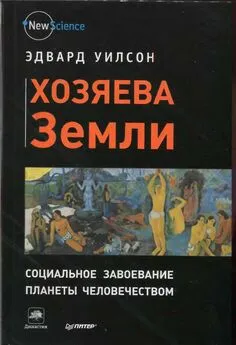
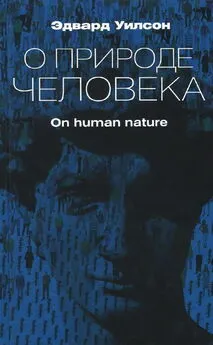
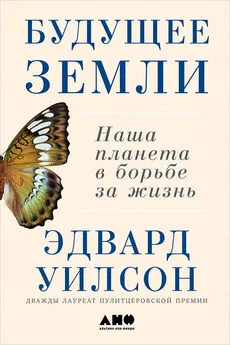
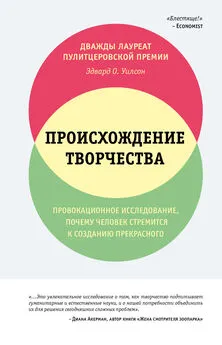
![Карина Демина - Моя свекровь и другие животные [litres с оптимизированной обложкой]](/books/1095131/karina-demina-moya-svekrov-i-drugie-zhivotnye-litr.webp)

